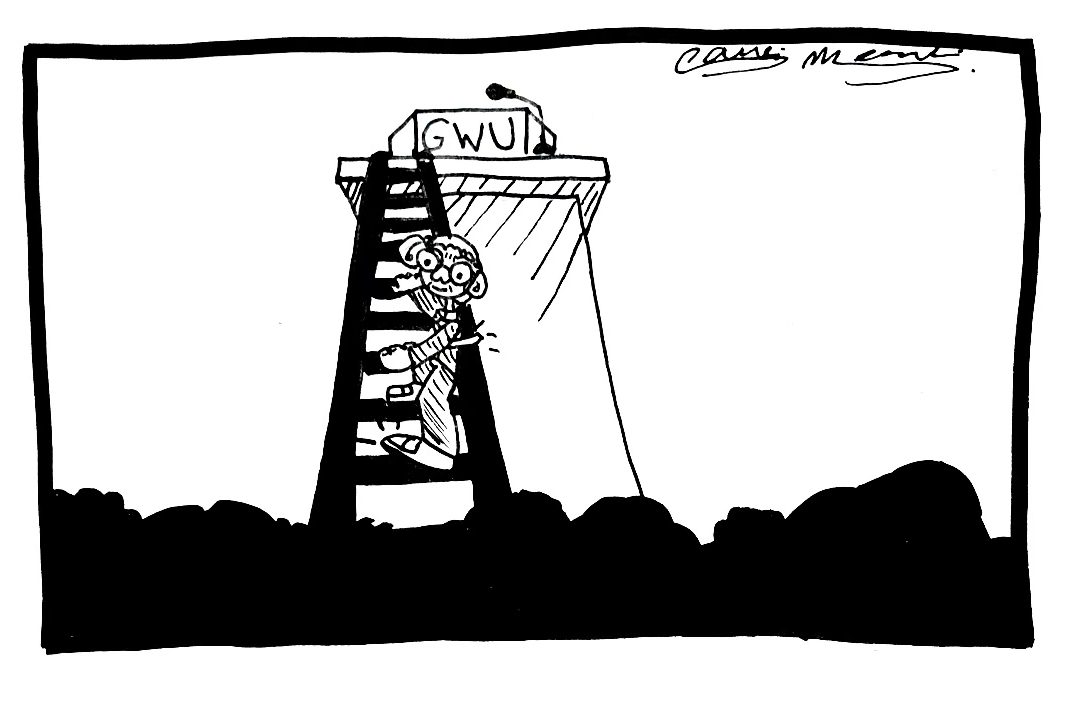Last weekend, minimum wage workers in the District received a raise in their wages. This pay boost will be sure to help students. But just a few days later, the Trump administration made a move that will hurt some students by revoking federal support for affirmative action.
Here’s the best and worst from this week’s headlines:
Thumbs up:
Minimum wage workers in the District, which include many high school and college students, will now earn at least $13.25 an hour. Workers previously earned $12.50 an hour and in the next few years, wages will rise again to meet the goal of $15 an hour by 2020.
This boost excludes people who work as tipped employees, but D.C. residents recently voted to increase tipped employees’ wages to $15 by 2025.
Approximately half of minimum wage workers in 2016 were younger than 25 years old, so this change especially affects students. For those students who are highly dependent on income from jobs like waiting tables or working a federal work study job for the University, the few dollar raise will make a difference.
But, if students cannot depend on their families to help with their finances, the raise may not be enough for them to afford to live. A report by the National Low Income Housing Coalition states that a singular “minimum wage worker cannot afford a two-bedroom apartment anywhere in the U.S.”
Although this will benefit some students, businesses, especially local establishments, will likely feel the sting. In California, where the minimum wage has steadily been rising since 2006, the results seen have been mixed. While workers undoubtedly earned a more stable income, businesses were unable to hire as many employees as before.
While this minimum wage hike will help students in the short term, the results of the increase over time are still being evaluated. For now, students will enjoy some extra cash in their pocket that will help them be more financially independent.
Thumbs down:
The Trump administration reversed federal support for affirmative action policies Tuesday. The former policies came from the Obama administration and were a way to increase diversity among students admitted to colleges and universities.
The ramifications for rescinding affirmative action policies, which improve educational opportunities for minority groups, won’t just affect applications to college, but also applications to private pre-kindergarten to high school institutions.
Many supporters of the Trump administration’s decision believe that race shouldn’t be a factor in applying to colleges or universities. Some say the previous policy created a form of reverse discrimination, in which white students were looked at less favorably than minority students by universities trying to diversify their student body. Meanwhile, supporters of affirmative action have said that minority groups deserve federal protection against systemic discrimination.
But of the millions of students enrolled in post-secondary education in the U.S., the majority of them are white. In 2015, 55 percent of the 20 million students in college were white, while 14 percent were black and 17 percent were Hispanic. And at more competitive institutions, the percentage of students of color, particularly black and Hispanic students, is lower.
Having affirmative action policies in place can help more minority students attend college, which is a positive. White students remain the majority at most colleges and affirmative action only seeks to level the playing field and give minority students equal access to education – not shift discrimination to another group.
Although the Trump administration has made a statement regarding its stance on affirmative action, the debate surrounding the practice will likely not end anytime soon.
Renee Pineda, a senior majoring in political science, is the Hatchet’s opinions editor.
Want to respond to this piece? Submit a letter to the editor.



